Concepts and Principles Overview
(Click on the thumbnail image to see the full image).
COMPASS Architectural Framework Framework (CAFF) for a Enterprise (SoS) Architecture Description Framework
See the Ontology Definition View of the COMPASS Architectural Framework Framework (CAFF) for all underlying concepts and principles used in this Architecture Description Framework
Underlying UML models are being enhanced:
Enterprise as a System of Systems
Organization as a System of Systems
Architecture
This architecture description framework if based upon the latest version of ISO 42010.
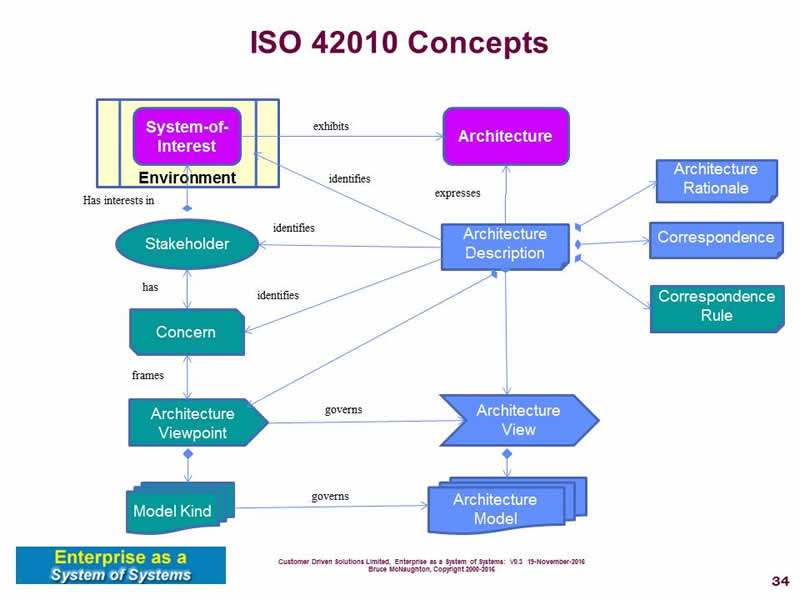
Viewpoints are based upon stakeholders and their concerns. The viewpoints allow for an inclusive / collaborative view of the architecture of an organization.

For example:
Top Managers, Top Team, other key stakeholders
HR, OD, Managers
OD, Managers, IT, BPM, Quality
HR, Quality, Managers, BPM, Finance
IT, Managers, BPM, Business Analysts,
All
Capabilities are combinations of people, process and technology that are deployed through teams.
Current and Target Architecture Descriptions provide the basis for GAP analysis and the subsequent Transformation and Change.
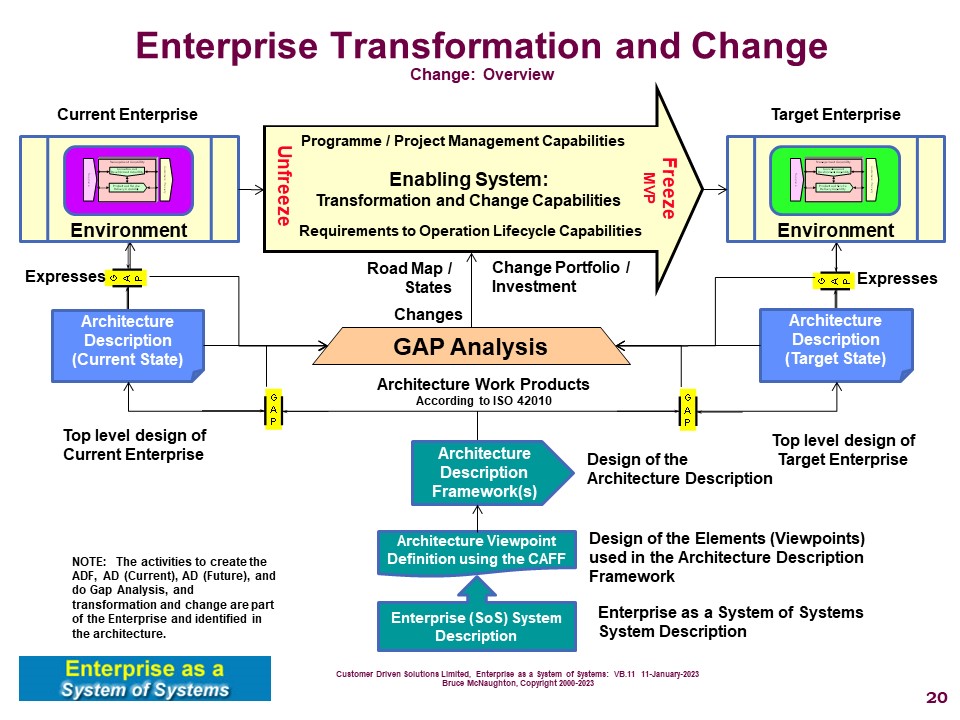
Plans Viewpoint
Plans identify the key objectives and goals for the organization. There will be a Current Architecture Description that describes the way the organization works today and a future Architecture Description that describes the desired state. Transformation and change from one state to another is a means to identify the requirements for change and the corresponding investment required to achieve the changes.
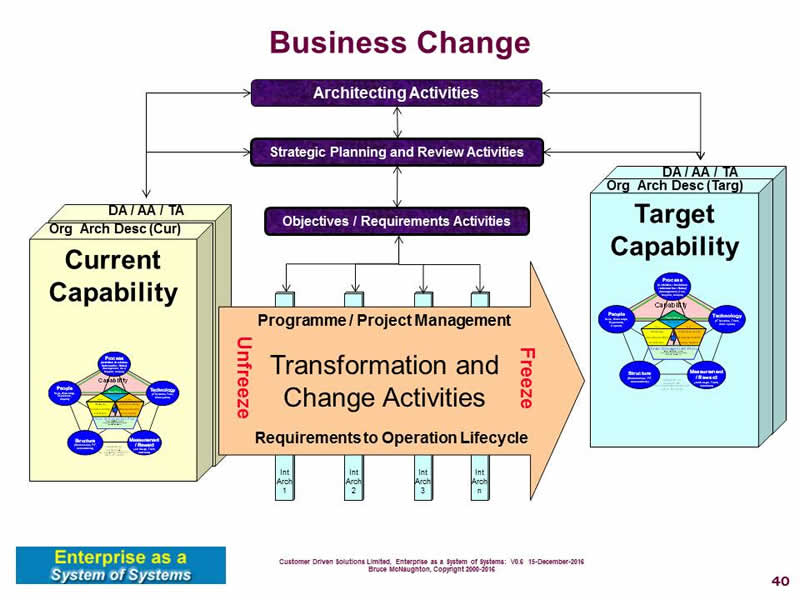
Organizational Unit or Team
The Team is the essential building block for the organization (also called Organizational Unit). Teams contribute to capabilities through the interaction of the parts of the team. (Capabilities are created dynamically through the people carrying out activities using tools within a team environment).
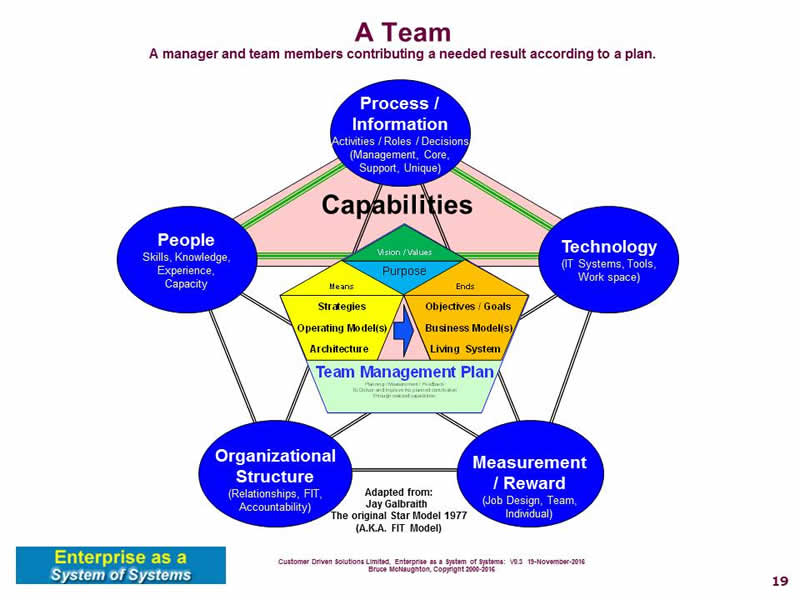
See the System Description for a Team
Activities of a Manager
The activities of a manager are carried out in every team and form the underlying structure of the management capability
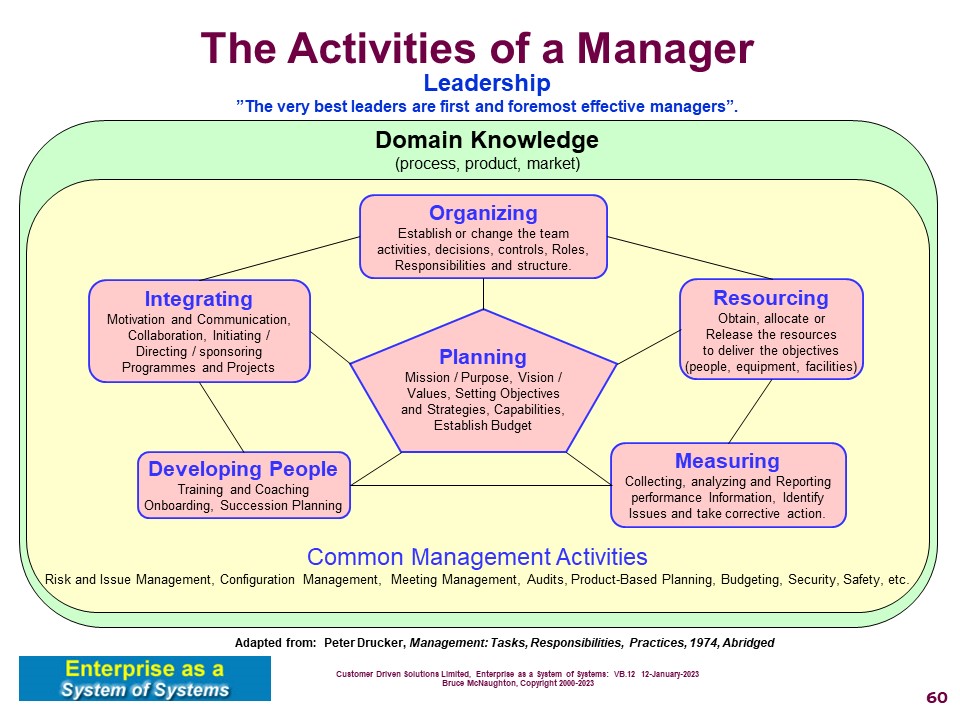
Performance
Performance is focused on whole systems (e.g. the organization as a whole).
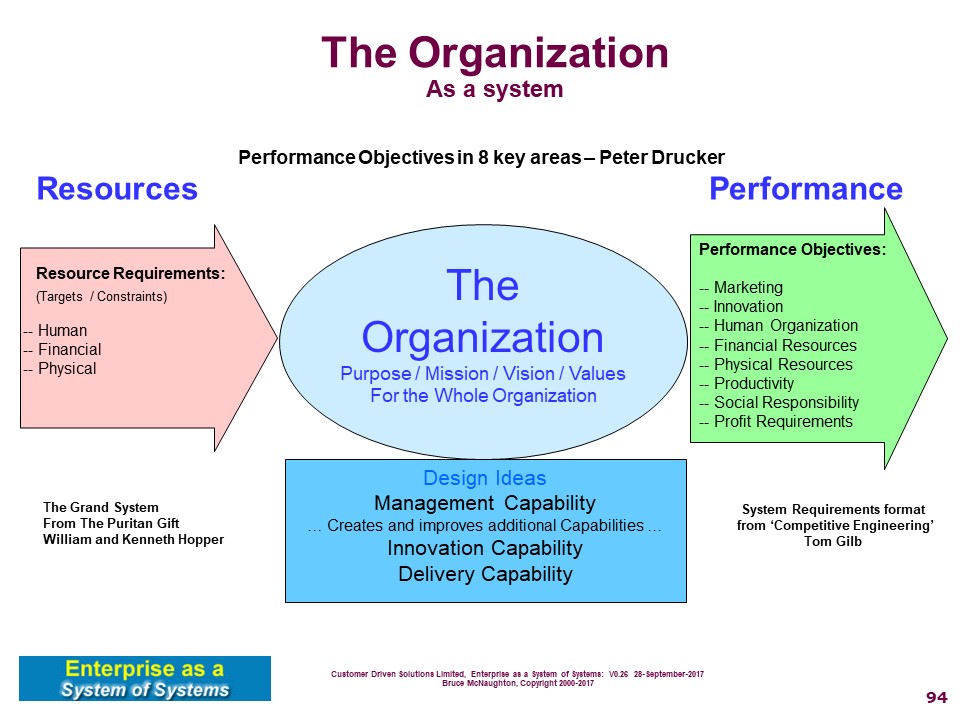
Performance is focused on Whole sub-systems (e.g. a whole sub-system) and allocated to the various parts.
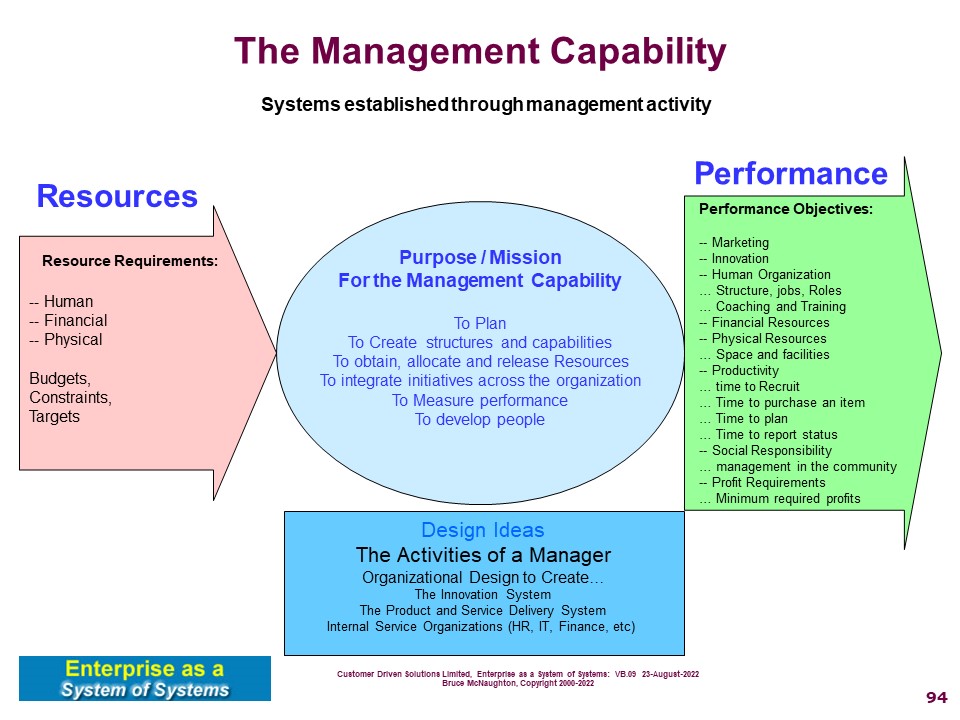
Process
Activities / Decisions are fundamental elements of work within a team. Activities / Decisions are allocated to roles who have responsibilities.
Descriptions of Activities / Decisions identify what must be done. People performing the activities / decisions are assigned to a role and must have the necessary skills, knowledge and experience.
A Process is a related set of activities and decisions that describes the critical activities necessary to achieve an outcome. A process describes work within a team or across teams. A process is documented using the following structure.
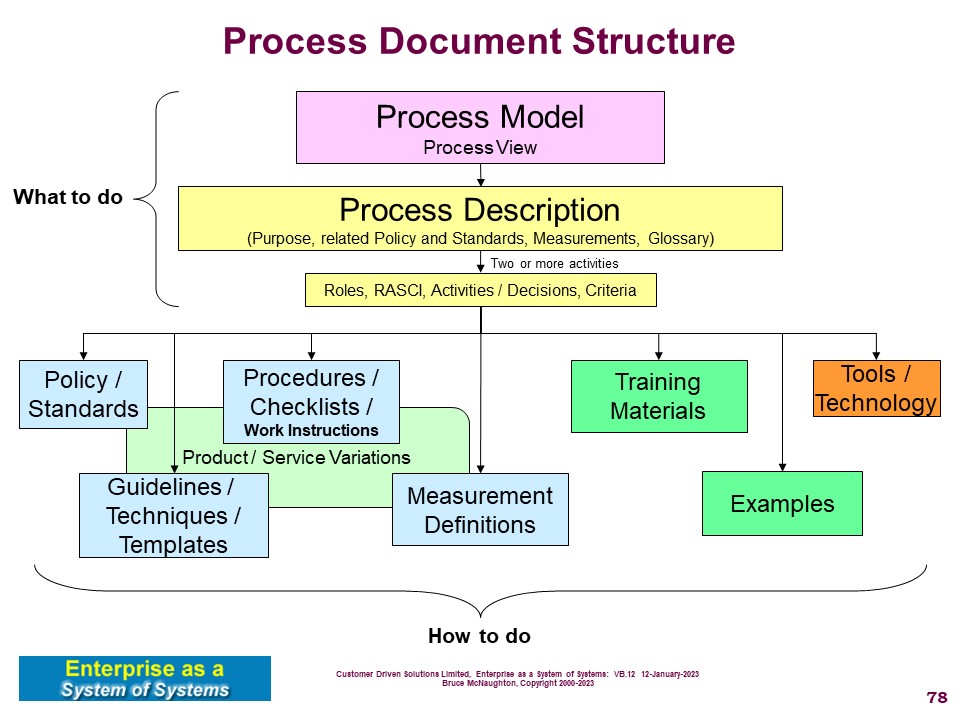
All processes are owned within the organization. The owner manages a process team using the process management process and the project management process.
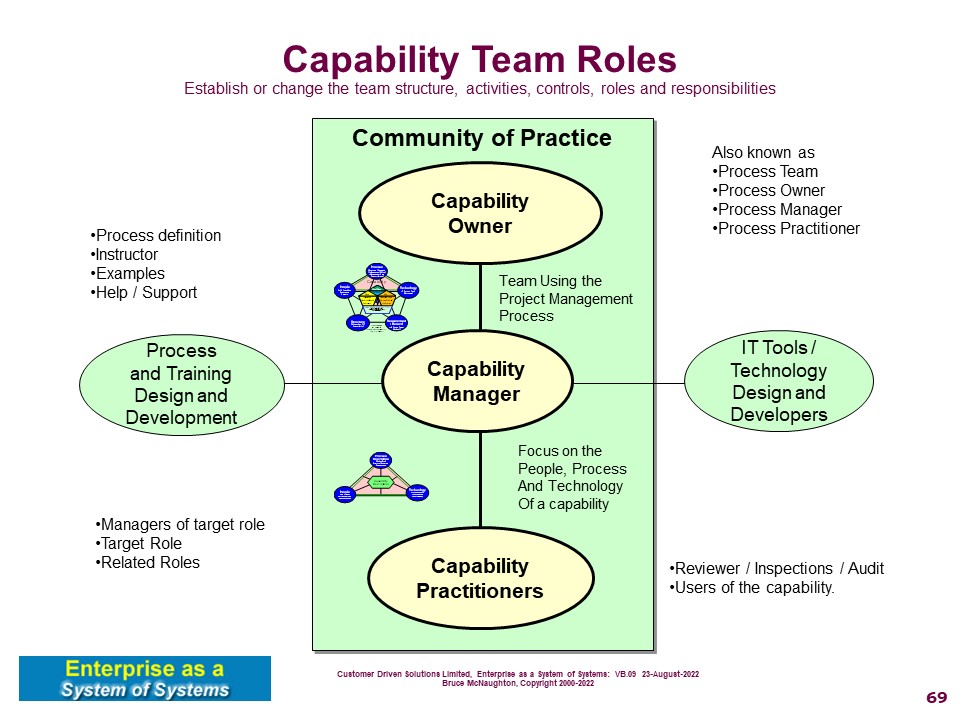
The Michael Porter Value Chain is a management view of the types of activities found within organisations. This can form the basis for a process model or the resultant capability model. Process design patterns are included as a starting point for the identification of the set of processes.
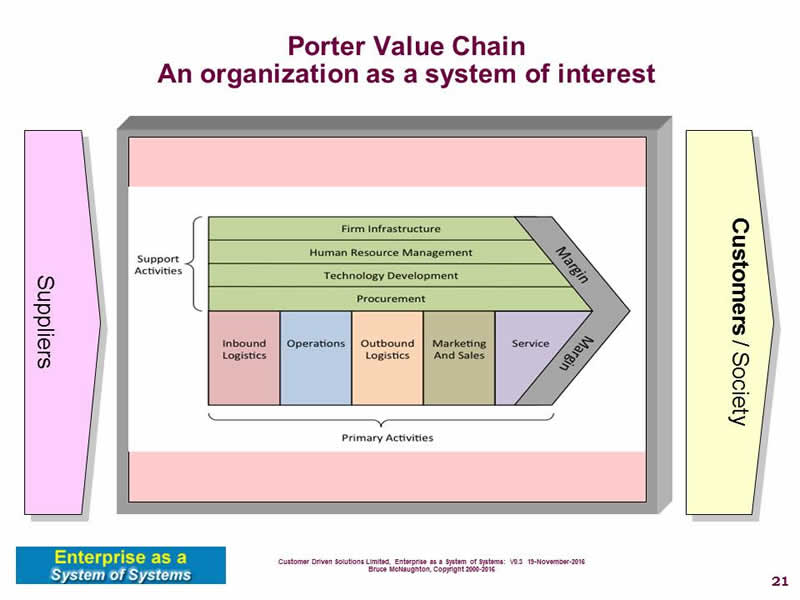 The processes are grouped according to the following capability model which has been derived from the Value Chain.
The processes are grouped according to the following capability model which has been derived from the Value Chain.

External Requirements
Relationship of External Standards, Processes, and Implementation. The gaps are identified, managed and closed by process teams.
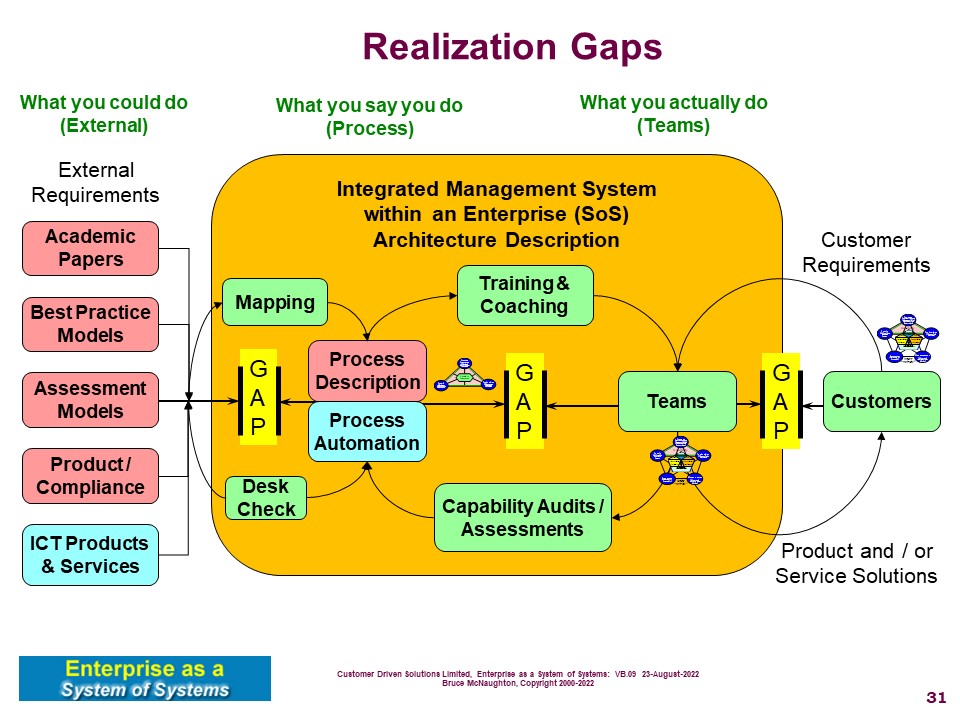
Some external standards require the documentation and implementation of a formal management system. This approach works for ISO 9001:2015 and for other related assessment standards. See Integrated Management System
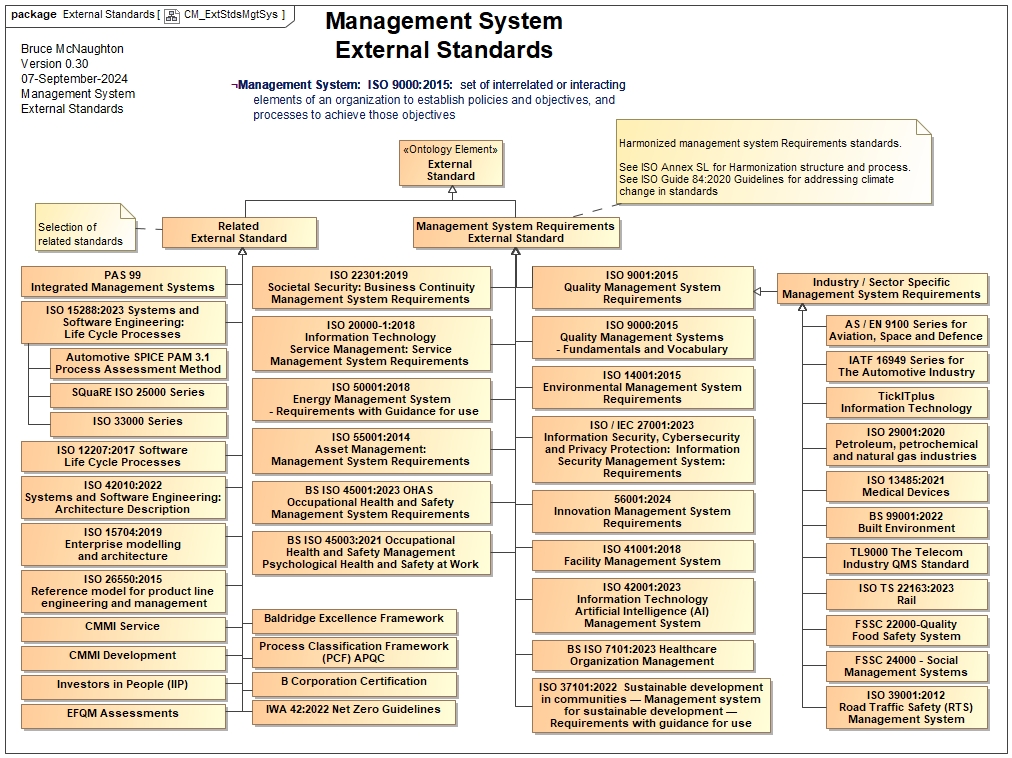
Various Presentations
Various Presentations have been given on the above concepts. These presentations have helped to clarify the concepts and get feedback from various user communities.
The following picture highlights the source for key management concepts in this Enterprise (SoS) Architecture Description Framework.
